- Register
- Log in to Tune-In
- Wishlist (0)
-
Shopping cart
(0)
You have no items in your shopping cart.
Beatles News
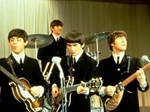
The Beatles are, well, what can we really say that isn’t obvious? They are probably the biggest band ever. The Fab Four remain icons of music. Throughout their time together, the Beatles created a litany of indelible songs and massive hits. In fact, 20 different Beatles songs hit number one on the Billboard Hot 100 charts. And yet, that isn’t the end of the Beatles’ quality output. In fact, these are 30 great songs from the Fab Four that were never chart-toppers in the United States.
“All My Loving”
Interestingly, the Beatles (or their label, more than likely) didn’t go in too heavily on “All My Loving.” It was released as a single in Canada, becoming a number-one hit. Then, eventually, the Canadian single got imported to the United States, but that left it to peak at 45 in America, which is a real surprise.
Source: Chris Morgan/Yardbarker
details
We love a classic interview where someone famous either nails a future prediction or, better still, they fail miserably at it, so we can gently mock them. We've discovered one that definitely sits in the former camp, and it's with none other than Beatles legend George Martin.
Back in 1983, Martin had, of course, moved on from producing The Beatles and onto other projects including setting up AIR Studios in Montserrat – a fascinating story in itself, which we go into here. That didn't mean he would ever stop getting asked about the band though, but he was always more than willing to talk about them.
It was also the year Martin had written his book, Making Music: The Guide to Writing- Performing and Recording, a compilation of his own "little tricks of the trade" and those from a vast number of his contacts, from Adam Ant to Hans Zimmer. And it was this book that he was being interviewed about in the November issue of Home & Studio Recording.
Source: Andy Jones/musicradar.com

It was 54 years ago today when Paul McCartney put out a press release saying he was no longer working with The Beatles.
Despite this, Macca claimed it was John Lennon who broke up the band in 1970.
Speaking previously with BBC Radio 4, the 81-year-old said: “I’m not the person who instigated the split.
“John walked into the room one day and said, ‘I’m leaving The Beatles’ and he said, ‘It’s quite thrilling, it’s like a divorce.’
“And then we were there to pick up the pieces. I didn’t instigate the split. That was our Johnny, coming in one day and saying I’m leaving the group.”
Hunter Davies, who wrote The Beatles’ only authorised biography during their career, backs up McCartney’s claim. According to The Times, he previously said: “Between 1966 and 1968, when I was hanging around them, it was clear that John had had enough. Of everything really: of his wife, Cynthia, of life, of the whole damn thing.”
Davies claimed Lennon would sit around idle for days, half-stoned and staring into space in total silence. Having become rich and famous, the restless star felt it was all the details

Sir Paul McCartney was "so embarrassed" when he tried to play lead guitar with the Beatles.
The 81-year-old music legend was part of the iconic rock group alongside John Lennon, George Harrison and Ringo Starr but explained when he tried playing lead guitar during an early gig instead of bass, he "totally froze" on stage.
Speaking on the 'Paul McCartney: A Life in Lyrics' podcast, he explained: "Mind you, when I first met John. He didn’t play guitar, ‘cause I had to show him guitar chords because he’d been taught by his mum [Julia], and she only knew banjo chords.
" We had this gig and it was like, the first thing I ever played, and I was lead guitar player. John was rhythm. And I had a solo and I totally froze. Could not move my fingers. … It was like, just so embarrassing. My lead guitar playing career melted at that moment and I said, ‘Well, I’m not doing this again. I’m not cut out for this. I’m no good."
The 'Hey Jude' singer provided most of the lyrics for the Beatles and was also co-lead singer alongside John and previously revealed he loves to spend time with his instruments and he even worries that some of them might feel "lonely".
details
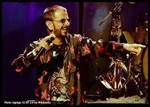
Beatles legend Ringo Starr has announced a new single, "February Sky," from his upcoming EP, Crooked Boy.
Crooked Boy will be Starr's fourth consecutive EP and includes four original tracks - "February Sky," "Gonna Need Someone," "Adeline," and "Crooked Boy." All songs were written and produced by Linda Perry for Starr to make his own, adding vocals and playing drums.
The EP will be released on a limited-edition marble vinyl on Record Store Day on April 20. On April 26, it will be released digitally. Fans can pre-order the black vinyl and CD now, releasing on May 31.
After previously collaborating on two songs that appeared on earlier Ringo EPs, Linda approached Ringo and asked if she could produce an entire EP. That was the origin of Crooked Boy.
"Linda made me a great EP - she produced it in her studio and then sent me the tracks and I added the drumming and my vocals," Ringo said. "'February Sky' is great - very moody - but since Linda wrote these specifically for me - it of course has to have a positive peace & love element."
Source: rttnews.com/
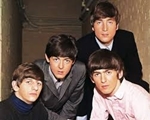
Arguably no group in rock history has had a bigger impact than The Beatles.
Paul McCartney, John Lennon, George Harrison and Ringo Starr, a.k.a. The Fab Four, produced 19 No. 1 albums, scored 20 No. 1 singles on the Billboard Hot 100 and became the best-selling music artists of all time, per the Recording Industry Association of America.
Founding members McCartney and Lennon met in Liverpool, England, on July 6, 1957. That day, McCartney played with Lennon’s band, The Quarrymen, and they bonded over their love of songwriting.
"I turned round to him right then on first meeting and said, 'Do you want to join the group?' ” Lennon said of his bandmate in The Beatles Anthology. “And he said ‘yes’ the next day as I recall it.”
McCartney brought his school friend, Harrison, into the fold in 1958, according to Far Out Magazine. After The Quarrymen rebranded as The Beatles in 1960, the group went through several more early lineup changes — including the addition of Starr and brief tenures of bass player Stuart Sutcliffe and drummer Pete Best. The Beatles released their debut album, Please Please Me, in 1963.
Proof of the band’s international success details

The final curtain will come down this summer on Cirque du Soleil's long-running show “The Beatles Love," a cultural icon on the Las Vegas Strip that brought band members Paul McCartney and Ringo Starr back together for public appearances throughout its 18-year run.
Cirque announced on Tuesday that the show housed at the Mirage will end on July 7, part of the iconic hotel-casino's major renovation plan to rebrand itself into the Hard Rock Las Vegas.
Stéphane Lefebvre, CEO of the Cirque du Soleil Entertainment Group, said in a statement that more than 11.5 million people have seen the show — an energetic portrayal of the Fab Four's history and music with aerial stunts and whimsical dance numbers on a colorful, 360-degree stage.
“We are grateful to the creators, cast, crew and all involved in bringing this show to life," Lefebvre said, "and we know The Beatles LOVE will live on long after the final bow.”
In a separate statement, Joe Lupo, president of the Mirage, thanked the Cirque performers and crew members working behind the scenes “who played a part in entertaining guests and bridged generations" for nearly two decades.
The production premiered in the details

If watching the "Get Back" docuseries has made you crave more Beatles, then we've got good news: Paul McCartney is hitting the road for what he's calling the "Got Back" tour.
"I said at the end of the last tour that I'd see you next time. I said I was going to get back to you. Well, I got back!" McCartney said in a statement.
The 13-city U.S. trek, the first since his "Freshen Up" tour ended in 2019, launches April 28 in Spokane, Washington, and is set to wrap up June 16 in East Rutherford, New Jersey.
The tour marks McCartney's first-ever show in Spokane, as well as his live debuts in Hollywood, Florida; Knoxville, Tennessee; and Winston-Salem, North Carolina; as well as his first show in Baltimore since 1964 with The Beatles.
The outing also includes a May 2-3 stint in Seattle.
Tickets go on sale Feb. 25 at 10 a.m. local time.
Source: goodmorningamerica.com
details
"Before Cliff Richard and 'Move It', there was nothing worth listening to in England."
That was the opinion of John Lennon, who once claimed Cliff Richard had a transformative effect on British pop music.
Despite later becoming chart rivals, the plucky singer actually had more of an influence on The Beatles than he would've perhaps realised himself.
Up until the release of Cliff Richard & The Shadows' 1959 hit 'Move It', rock 'n' roll hadn't quite yet made it across the Atlantic to the UK.
John Lennon claimed Cliff Richard was the best thing to happen to British music. Why George Harrison accused the Bee Gees of being "greedy". When George Harrison teamed up with Paul Simon for a beautiful duet of 'Here Comes The Sun'.
Cliff opened the gateway to a musical revolution on our shores, and made a lasting impact on another member of the Fab Four too.
In fact, insight from a new book reveals that George Harrison was inspired to pick up the guitar after seeing Cliff Richard perform.
Though unlike Lennon, Harrison wasn't as effusive in his praise for Richard's talent. Quite the opposite. Set for release on 11th April 2024, the new book All You Need Is Love has been descr details
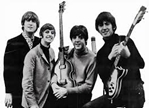
The Beatles may have amassed an entire library of books about their every utterance, but some songs still defy examination. Take ‘Revolver’ classic ‘And Your Bird Can Sing’ – catchy as hell, it pushed their beat sound to the limit… but no one can quite agree on what it’s all about.
Primarily written by John Lennon, the lyrics are oblique, and open to several interpretations. Essentially taking down a braggart, some critics believe the Fab Four were aiming at Frank Sinatra – in particular, a Gay Talese penned hagiographical profile, published in 1966.
If that’s the case, then the “bird” of the title could well be Nancy Sinatra – after all, father and daughter notched up a number of hit duets together.
To others, the braggart is actually Mick Jagger. The Beatles and the Rolling Stones enjoyed a friendly rivalry during the 60s, and in 1966 the Stones were very much on the ascendant, scoring huge international hits.
Could the ‘bird’ of the title refer to Marianne Faithfull? The parallel is perhaps too cute – Faithfull and Jagger began dating after the song was released.
Discarding the ego-centric discus details

Only two members of The Beatles remain, as both Paul McCartney and Ringo Starr are not only still around, but they continue to write and record music and even tour. According to an exciting new announcement made by one of their children, the two musicians may have a new collaboration in the works–or at least, they’re slated to appear on the same project as one another.
Zak Starkey, Starr’s son and a drummer, took to Instagram to reveal he has a new charity musical effort in process. He shared some of the details about a forthcoming project, including confirming–or so it seems–that both his father and McCartney are involved.
Starkey revealed that he has recorded a cover of “Children of the Revolution” by the rock band T. Rex, and this is an all-star affair. The reworking reportedly features vocals by Axl Rose, Duff McKagan recorded the bass, and his own father played the drums. The forthcoming cover of “Children of the Revolution” was then sent to Elton John, who added piano to the tune. Slash recorded the guitar on the song.
Instagramtherealzakstarkey on Instagram: "Around 3pm On the day of the who and gnr show at rock in Rio - duff and I went in a lo details

Ringo Starr is ready to drop some new music.
The Beatles drummer announced that the new song, “February Sky,” will be released Friday, April 12, giving fans their first taste of his new EP, Crooked Boy. Crooked Boy includes four original tracks, written and produced by Linda Perry, who wrote two songs that appeared on Ringo’s 2021 EP, Change the World.
“Linda made me a great EP – she produced it in her studio and then sent me the tracks and I added the drumming and my vocals,” Ringo shares. “’February Sky’ is great – very moody – but since Linda wrote these specifically for me – it of course has to have a positive peace & love element.”
Crooked Boy will be released on limited-edition marble vinyl for Record Store Day on April 20. That will be followed by a digital release on April 26, with the black vinyl and CD versions dropping May 31.
Fans who just can’t wait until April 20 to hear Crooked Boy will have a chance to preview it earlier at a fan listening event at Amoeba Music in Hollywood on April 18. They will also be selling a special red vinyl seven-inch single of the track.
Source: ABC News/everet details
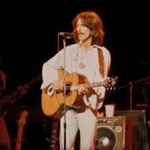
It’s fair to say the two high points of George Harrison‘s solo career were All Things Must Pass, his first post-Beatles solo release, and Cloud Nine, his incredible 1987 comeback. But he delivered a lot of good stuff in between, if admittedly on a less consistent basis. His 1979 single “Blow Away,” for just one example, stands out as a breezy, thoughtful gem.
What was the song about? What inspired Harrison to write it? And how did it bring him back into the world of songwriting and recording at a time when he’d largely abandoned it? Well, to paraphrase “Blow Away,” all you got to do is read on and find out.
A Beatle on a Break
John Lennon wasn’t the only ex-Beatle to take a little break from the album-making grind in the late ’70s. George Harrison largely walked away from the music world for a two-year period as well. After releasing four albums in a four-year stretch, ending with Thirty Three & 1/3 in 1976, the Quiet Beatle lived up to his name by not releasing anything until his self-titled 1979 album, for which “Blow Away” was chosen as lead single.
Why the layoff? Well, Harrison had become a bit fed up with the scene. He never details

George Harrison remained an enigma to many people, even those who were close to him. For a man who lectured passionately about karma and the meaning of existence, he seemed self-protective and closed off. Witty when called upon, there were also moments when he could be quite boorish. Perhaps it was because he was only twenty years old when the Beatles became a global sensation. That might not seem particularly young in today’s world of social media fame, but at the time, it was uncharted territory for the kind of adulation he was experiencing.
It was also difficult living in the shadow of Paul and John. In the beginning, they were openly dismissive of him. Paul said he always thought of George as a little...
Source: Steven Gaines | Peter Brown/thetimes.co.uk
details
It’s hard to talk too much about John Lennon‘s “Grow Old with Me” without referencing the tragedy that rendered the song’s heartfelt wishes an impossibility for Lennon and his wife Yoko Ono. Let’s instead celebrate it as a beautiful message of enduring affection that can be appreciated by lovers of all ages who want to stick with their significant others into the autumn and even winter years.
What is “Grow Old with Me” about? How did a songwriting challenge between John and Yoko help to create it? And how did the song eventually undergo a few Beatles-adjacent releases? The story begins with the flurry of songwriting and recording activity that John Lennon perpetrated in the final year of his life.
Yoko Throws Down the Gauntlet
Yoko Ono indirectly started the process of “Grow Old with Me” coming into existence with a song of her own. Ono had used Elizabeth Barrett Browning’s “How Do I Love Thee (Sonnet 43)” as the basis for her song “Let Me Count the Ways,” and she challenged Lennon to write one of his own based on a Robert Browning poem. On holiday in Jamaica in the summer of 1980, he obliged, using the poem “Rab details
